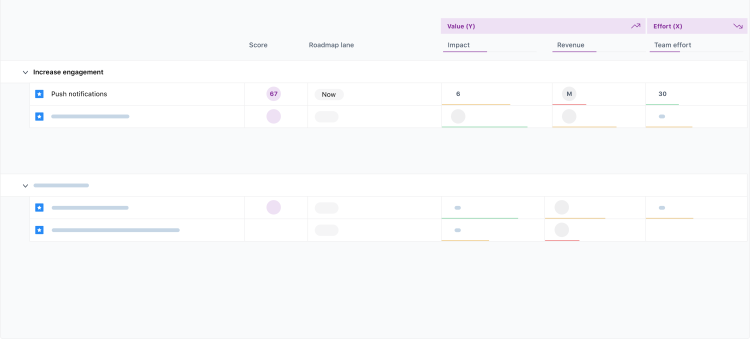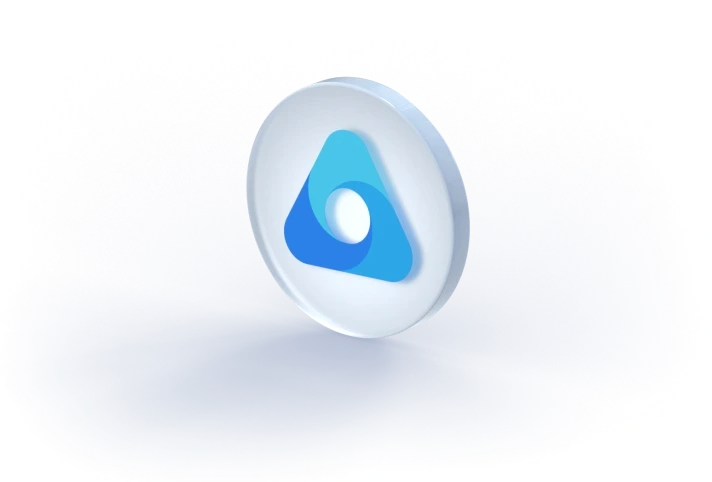
Agile sprint roadmap template
Discover it live
Preview

What is an agile sprint roadmap
As the name implies, agile roadmaps are a highly flexible and agile type of roadmap — focusing on sprints rather than timings. Agile roadmaps are designed to help teams working in markets or environments in a continual state of flux.
An agile roadmap template often visualizes short-term periods, with a time horizon of about 2-4 months. They don't define due dates or deadlines but focus on progress instead.
But timeline estimates are essential, even in agile working. The agile sprint roadmap template can be used to give teams and stakeholders an idea of when work will be done and when features will be released, providing rough estimations based on time units like months or quarters.
Product owners mostly choose a simple prioritization set-up to decide which initiatives or improvements make it into the backlog or later on the roadmap. In 90% of cases, customer value, strategic fit, and complexity work perfectly.
Why should you use an agile roadmap template?
The number one benefit of agile roadmapping is the ability to remain flexible when the need for adjustments rises. By seeing the bigger picture, it’s easy for teams to skip certain steps in favor of the more important milestones.
An agile roadmap can also serve as a navigation tool — preventing the team from losing focus of where the project should be headed. By addressing the roadmap frequently, you’ll have the time to course-correct if your team is heading off in the wrong direction.
How do you build an agile sprint roadmap?
An agile sprint roadmap includes releases, initiatives, and user stories alongside features and timelines. The main steps can be summarized as:
Write product goals and strategy. Without a crystal clear strategy, it will be impossible for your team to know when you’re making meaningful progress (or not!).
Turn the goals into initiatives. Initiatives, also known as epics, will help achieve the set goals based on the team’s product vision.
Gather feedback. Having feedback from every team working on the project is crucial to build a realistic, comprehensive, and accurate agile sprint roadmap.
Plan the product release. Having a clear release date will help the teams form realistic expectations. But it’s an agile roadmap, after all, so this deadline should be rough and be adaptable to change.
Capture and apply customer feedback. An agile roadmap should be constantly updated with customer feedback and plans for how that feedback can be integrated into the product.
Download the airfocus agile roadmap template and fast-track the time required to get started. The template is structured around different sprints, in true agile form. Teams can also check out our agile roadmap template that’s organized by themes to represent product goals.
Get started with the agile sprint roadmap template now

Pre-installed apps
Priority Ratings
Set up a custom prioritization framework
Benefits that come from using this template
Powerful prioritization framework
Build a strategic product roadmap
Seamless integrations
Ready to use & fully customizable
Learn how to use airfocus templates effectively
More templates
Experience the new way of doing product management


Experience the new way of doing product management




